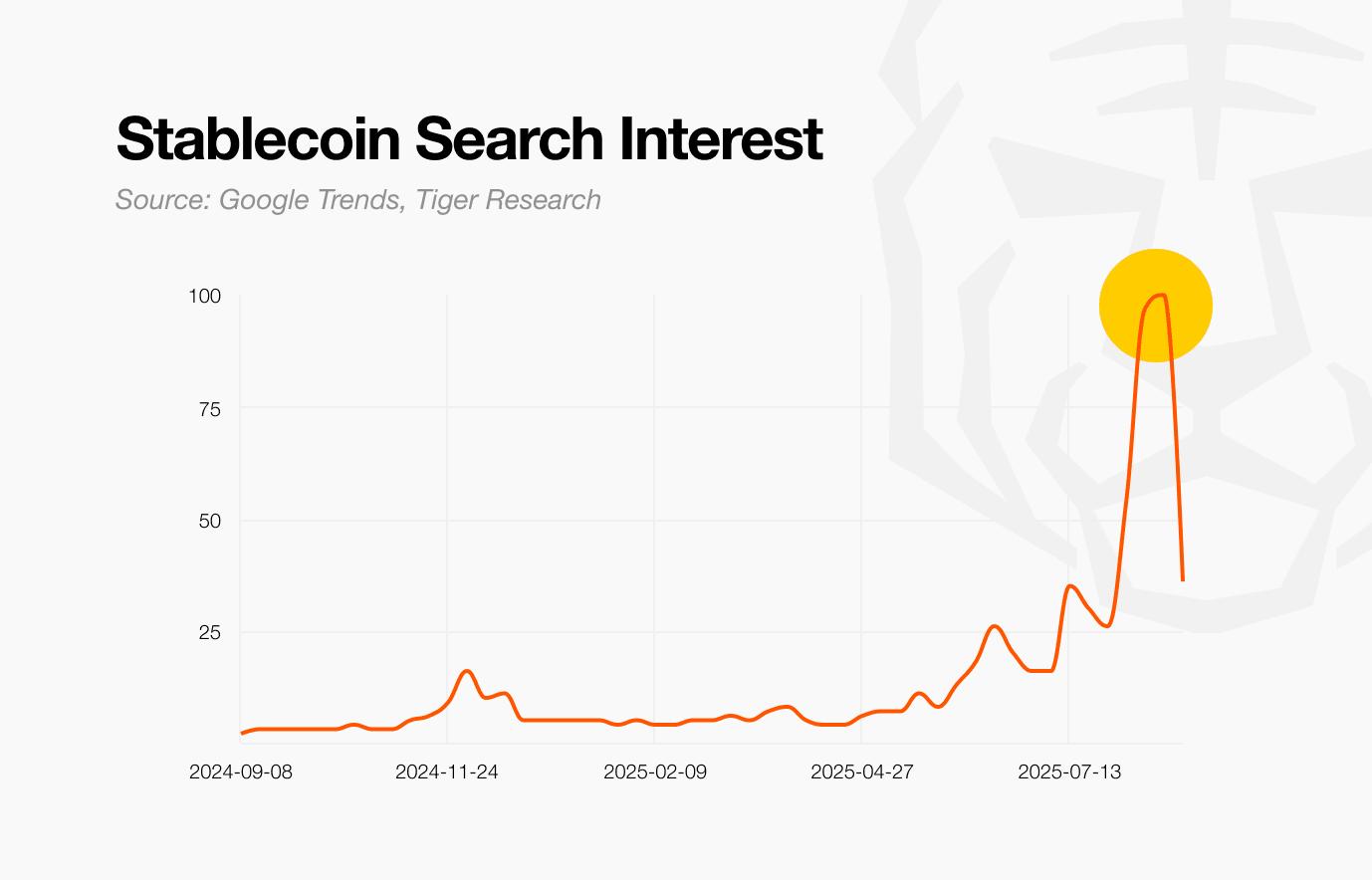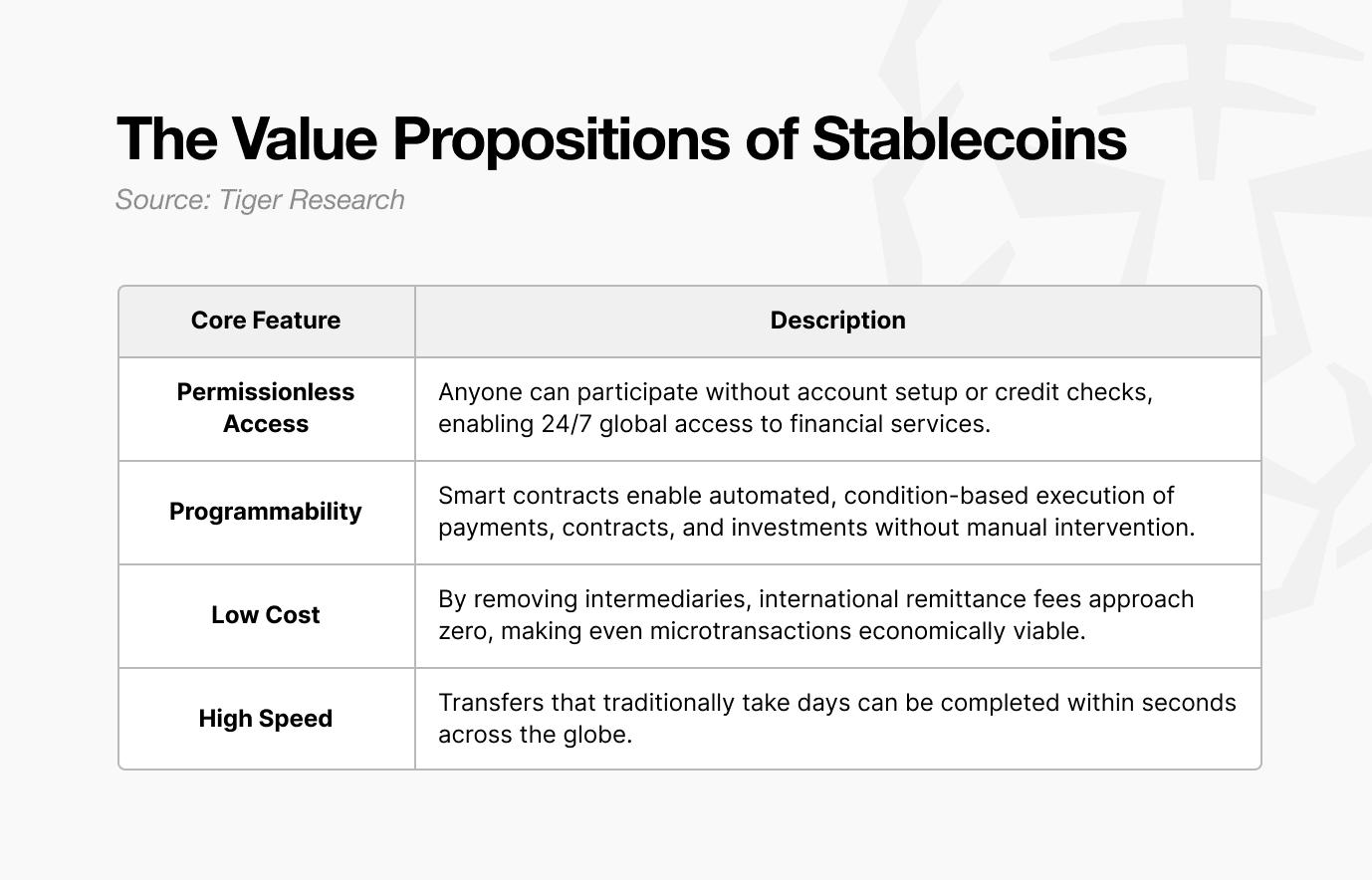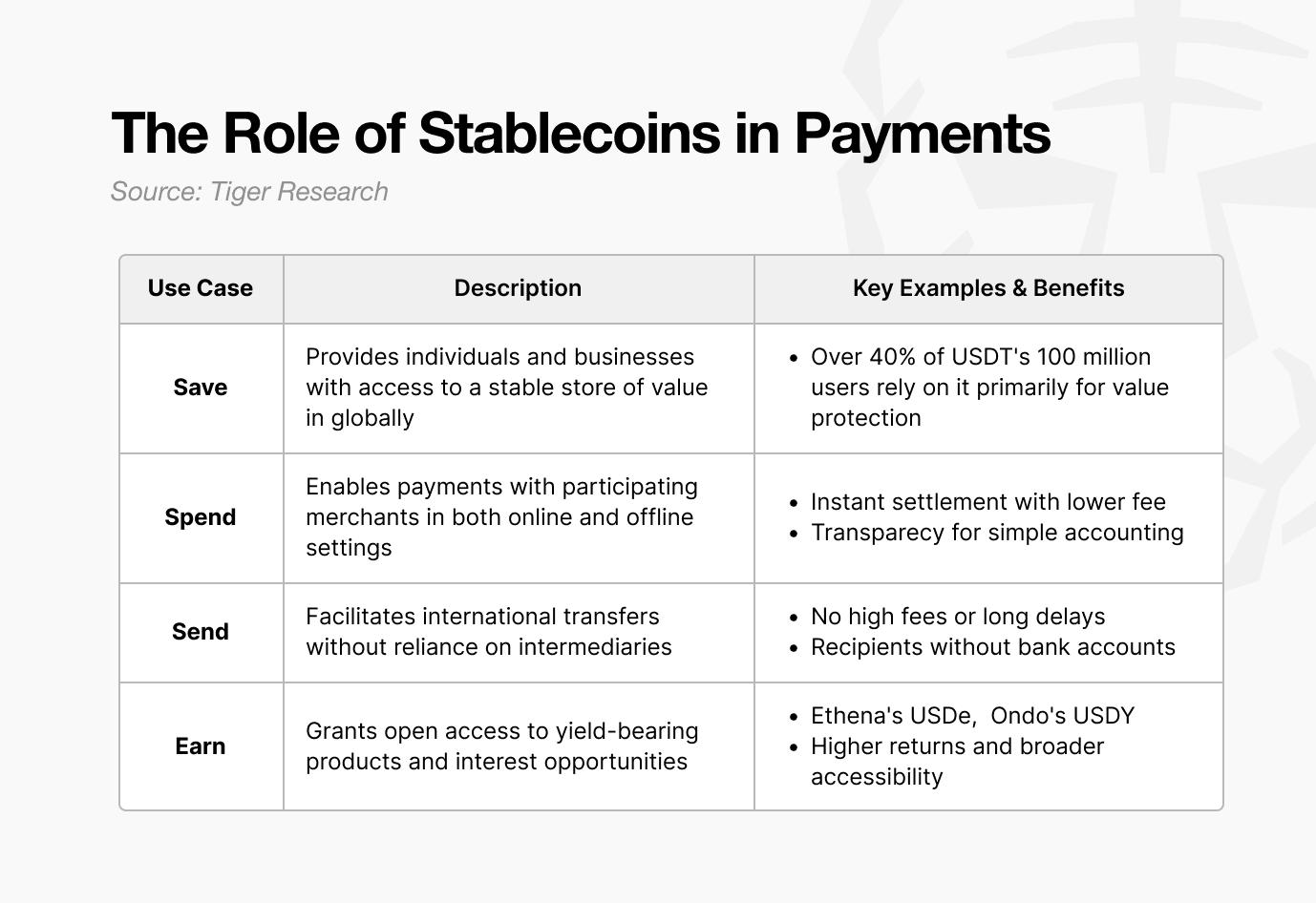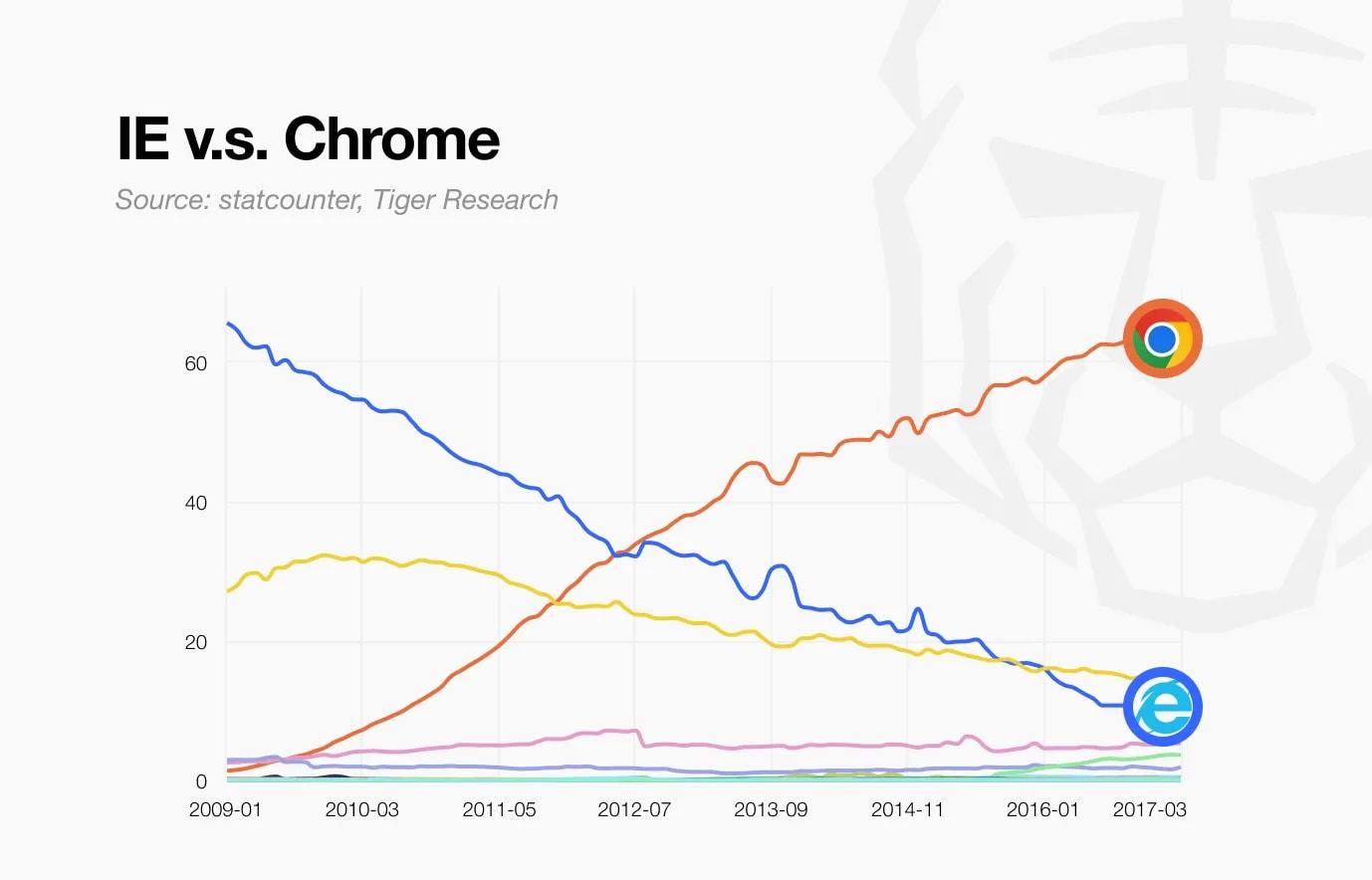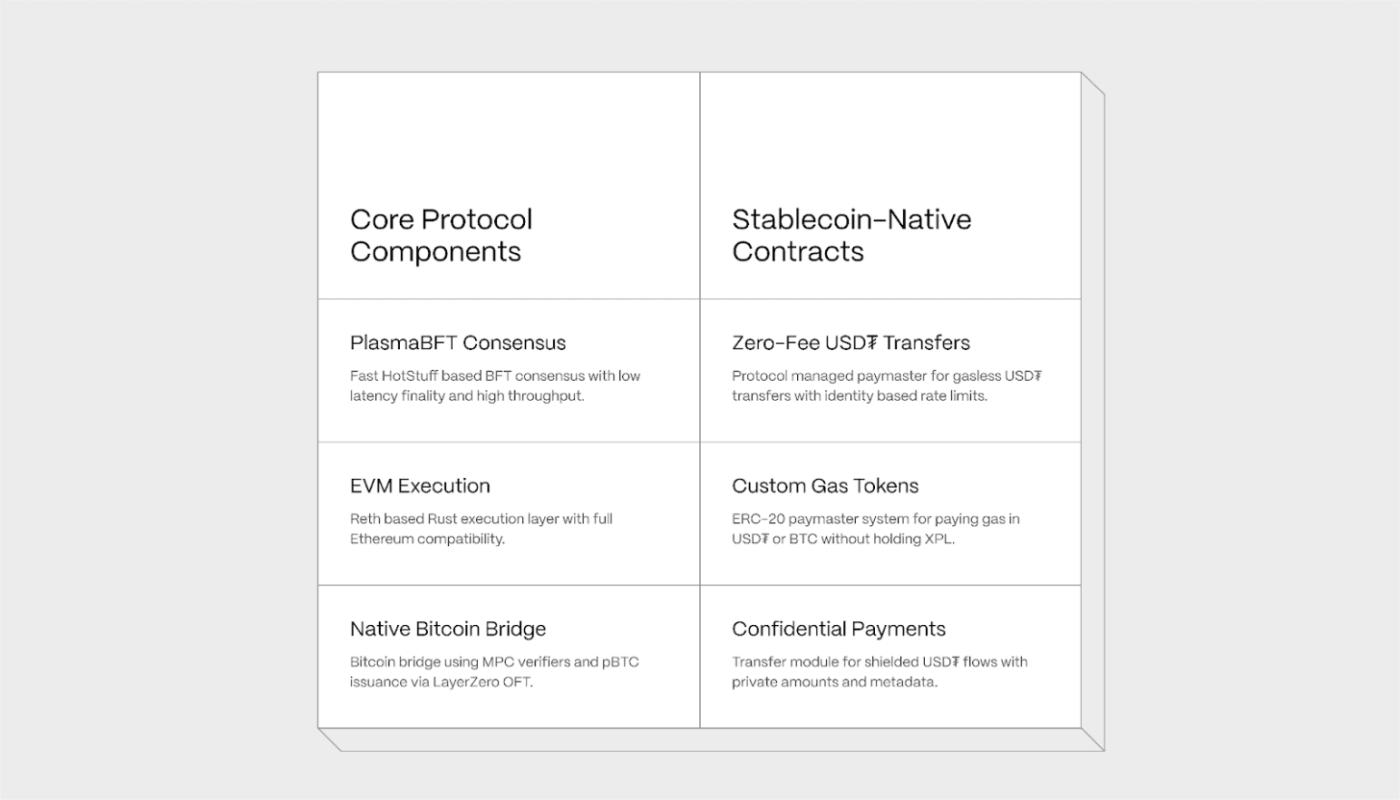This report, written by Tiger Research, analyzes how Plasma aims to become the "Chrome for stablecoins" by revolutionizing blockchain infrastructure, just as the Chrome browser revolutionized web browsing by breaking through the limitations of Internet Explorer.
1. Do you really understand stablecoins?
Global interest in stablecoins is growing. However, the distinction between them and traditional digital payment methods remains unclear to many. This is partly because digital financial systems are already well-established. Credit cards and mobile wallets already enable digital transactions.
Against this backdrop, the question arises: Do we really understand stablecoins?
Stablecoins are digital assets pegged to fiat currencies, such as the US dollar, to maintain price stability. Their key difference lies in their reliance on blockchain rather than traditional financial infrastructure. Blockchain enables peer-to-peer transactions without the involvement of intermediaries, including banks, payment processors, or card schemes.
In the fiat currency system, banks, card companies, and remittance service providers act as multiple layers of intermediaries. Each additional layer of intermediaries introduces delays and higher costs. Cross-border remittances often take days or even weeks to settle and incur high fees. Transactions are also subject to banking hours, which exclude weekends and holidays.
Stablecoins eliminate these frictions by connecting users directly on a blockchain network. No approval or permission is required. Money can be transferred instantly, anytime, anywhere, with an internet connection. Functionally, it's similar to the exchange of physical cash, but in a digital, borderless form.
These attributes translate into four core values: permissionless access supports global financial inclusion; programmability enables automated financial processes; low cost improves efficiency; and high speed builds real-time global settlement infrastructure.
Consider an illustrative example: a freelancer in Argentina can open a digital wallet to store US dollars without bank approval. A smart contract then automates monthly deposits. Currency conversion costs drop from $10 to $0.10. Within seconds of receiving payment, earnings are converted into stable US dollars, protecting income from inflation.
Together, these applications demonstrate how stablecoins can break through the limitations of traditional finance. They offer new ways to store, spend, send, and earn money.
However, barriers to adoption remain high. Users must operate multiple blockchains, manage wallet addresses, maintain private keys, and transfer assets across multiple chains. Each task requires technical expertise that most users lack.
To realize the full potential of stablecoins, simplifying the infrastructure is crucial. Just as Chrome simplified web access, stablecoins need a similar service layer to achieve widespread availability.
Internet Explorer (IE) popularized web access, but suffered from slow speeds, weak security, and poor standards support—despite initially having 95% market share. Users tolerated complex plug-in installations, frequent crashes, and sluggish performance because no viable alternatives existed.
In 2008, Google Chrome changed everything. It delivered nearly ten times the speed, adopted a multi-process architecture for stability, and enhanced security with automatic updates. Complex technology was hidden behind the browser, leaving users with a fast and reliable web experience. Within five years, Chrome surpassed IE to become the global leader.
The stablecoin market faces a similar dilemma. Existing blockchains support stablecoins, but, like IE, have failed to realize their full potential. Users accept high fees, complex processes, and frequent network congestion as the inevitable price to pay.
Plasma enters the space as a high-performance Layer 1 blockchain designed specifically for stablecoins. Just as Chrome redefined web browsers, Plasma aims to redefine stablecoin infrastructure.
Traditional blockchains often require minutes or even hours to achieve transaction finality. On Ethereum, sending USD₮ during periods of congestion can involve significant delays. Plasma fundamentally solves this problem. Through its novel consensus mechanism, PlasmaBFT, transactions can achieve finality in under a second.
The Fast HotStuff algorithm accelerates the consensus process. Simply put, it ensures consensus among participants in fewer steps. Multiple node signatures are aggregated, streamlining the verification process. The number of messages exchanged at each step is also reduced. New block proposals can be initiated without waiting for the completion of previous blocks. This results in improved overall throughput. Under optimal conditions, finality can be achieved with just two consecutive proofs.
The analogy with browsers is instructive. In Internet Explorer, a frozen tab can cause the entire application to crash. Chrome addresses this issue by creating a separate process for each tab, thereby enhancing stability. Similarly, Plasma optimizes transaction processing, improving the stability of the entire network.
For developers, the most critical factor is being able to use existing knowledge and tools without modification. Chrome fully supports web standards, freeing developers from the compatibility issues of Internet Explorer. Similarly, Plasma supports all Ethereum applications and tools without code changes.
Developers can work in a familiar environment. Plasma achieves full EVM compatibility by being based on Reth, a high-performance Ethereum client written in Rust. Smart contracts can be migrated to Plasma without changing a single line of code, eliminating a major barrier to entry.
The browser analogy is clear: when a user switches from IE to Chrome, website functionality remains unchanged. Similarly, Plasma seamlessly integrates with the existing Ethereum ecosystem.
Plasma is developing a Bitcoin cross-chain bridge alongside its stablecoin infrastructure. This initiative has two primary goals: issuing a BTC-collateralized stablecoin and building a financial ecosystem centered around Bitcoin.
In a stablecoin system, the reliability of the collateral asset is crucial. Bitcoin, with 15 years of proven reliability, is currently the most secure digital asset. However, its lack of native smart contract functionality limits its use as direct collateral.
In the traditional model, centralized custodians hold Bitcoin and issue wrapped tokens. This model brings two persistent problems: single point of failure and high transaction costs.
Plasma’s native cross-chain bridge addresses these limitations by allowing Bitcoin to be transferred directly into the EVM environment, enabling it to be used as programmable collateral.
This approach expands Bitcoin’s role in financial applications while preserving its security guarantees. It also integrates Bitcoin into the DeFi ecosystem, allowing users to store BTC while transacting with stablecoins like USDT, thereby advancing the Bitcoin-driven financial environment.
Zero-fee USD₮ transfers are a core feature that enables Plasma to function as a stablecoin infrastructure. Just as Chrome revolutionized the browser market by offering free access, Plasma will drive stablecoin adoption by offering free transfers.
Users only need to hold USD₮. System-level payments on the mainnet cover transaction fees. This policy applies only to official USD₮ token transfers. Basic identity verification and transfer limits prevent abuse.
In practice, the Plasma Foundation allocates a fee budget to cover gas costs. Users can complete all transactions using only USD₮, without any gas fees.
Traditional blockchains restrict fees to their native tokens. Ethereum requires $ETH, Polygon requires $POL, and Tron requires $TRX. Users must manage tokens other than USD₮.
Plasma removes this friction. Users can pay fees directly with familiar assets like USD₮ or BTC. After selecting a token from an approved list, a trusted oracle sets the fee based on the real-time exchange rate.
A core characteristic of blockchain is transaction transparency. Anyone can view the amount, sender, and recipient. While this ensures openness, it also limits privacy. In contrast, traditional finance protects privacy but relies on regulatory oversight.
Plasma is working on a privacy payment module that can be selectively applied as needed. Just like Chrome's choice between normal mode and incognito mode, transactions can be kept public or private depending on the scenario.
On a technical level, the recipient's identity is hidden through a one-time address, and transaction details are encrypted in a memo. The system runs in an EVM environment, ensuring DeFi compatibility.
Importantly, regulators can still access information when needed for anti-money laundering or tax compliance. This balance achieves privacy without sacrificing regulatory standards.
Plasma is currently gaining significant market traction. The XPL token sale closed in minutes. Binance Earn's campaign reached $1 billion, attracting over 30,000 participants before quickly closing. However, sustaining growth requires more than just technological advancement. A broader strategic approach is crucial.
Chrome's success offers a useful example: While Chrome initially attracted users with its superior speed and performance, its real growth engine was its extension ecosystem. Everyday tools like MetaMask and DeepL run seamlessly on Chrome, transforming it from a browser into a digital platform.
Plasma is following a similar trajectory. Currently, it's focused on core infrastructure leading up to the mainnet launch. Zero-fee transactions and EVM compatibility are comparable to Chrome's speed advantage. However, the decisive phase is still to come.
Plasma understands the importance of ecosystem development . Its partnerships with top DeFi protocols like AAVE, Pendle, and Ethena demonstrate this commitment. Through its Community Builder Program, Plasma is actively recruiting developers. These early investments lay the foundation for a diverse ecosystem of services, similar to Chrome's extension ecosystem.
The real potential lies in unlocking new service areas: high fees have previously hindered use cases like microcredit, real-time wage payments, and micropayment-based content services. With Plasma, these become economically viable. As these services emerge, Plasma's utility and user base will expand significantly.
Ultimately, Plasma seeks to achieve the same transformation that Chrome brought to the internet: complex technology hidden behind the scenes, leaving the user experience simple and intuitive. For stablecoins to mature into true digital currencies, usability, not technical complexity, will be the determining factor.
Plasma aims to be the "Chrome of stablecoins".
Dive deep into Asia's Web3 market with Tiger Research. Become one of over 16,000 leading analysts gaining exclusive market insights.
Disclaimer
This report was funded in part by Plasma. This report is based on materials we believe to be reliable. However, we do not guarantee, express or implied, the accuracy, completeness, or suitability of the information. We assume no liability for any losses arising from the use of this report or its contents. The conclusions and recommendations in this report are based on information available at the time of preparation and are subject to change without notice. All projects, estimates, forecasts, targets, opinions, and views expressed in this report are subject to change without notice and may differ from or be contrary to the opinions of other individuals or organizations.
This document is for informational purposes only and should not be construed as legal, business, investment, or tax advice. Any reference to securities or digital assets is for illustrative purposes only and does not constitute investment advice or an offer to provide investment advisory services. This material is not directed to investors or potential investors.
terms of use
Tiger Research permits fair use of its reports. The doctrine of "fair use" broadly permits the use of content for public benefit purposes, as long as the material's commercial value is not diminished. If the use qualifies as fair use, these reports may be used without prior permission. However, citations of Tiger Research reports must 1) clearly indicate "Tiger Research" as the source and 2) include the Tiger Research logo ( black / white ). Reprinting and republication of the material requires separate negotiation. Unauthorized use of reports may result in legal action.


